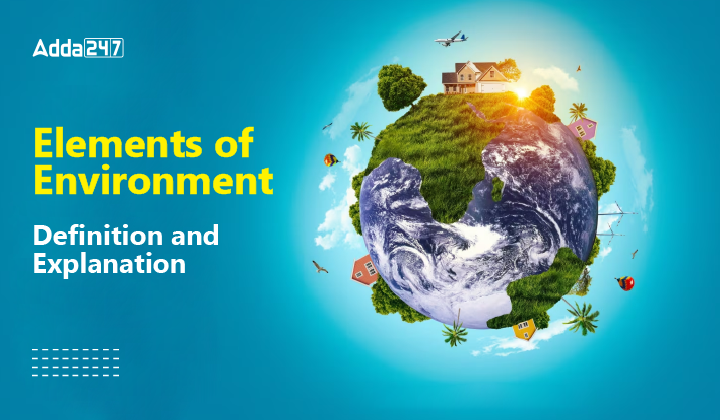Table of Contents
The environment supports and hosts life on this planet in a fine balance of different elements interacting with each other. Before understanding any complex issues related to the environment, such as global warming or weather phenomenon, it is crucial that we understand the Elements of Environment, Definition & Explanation in detail. It is the basic unit of further understanding of various environmental concepts. Each and every competitive exam these days has a dedicated section for checking knowledge about environmental science too. So, with that in mind, let’s jump in to understand the Elements of Environment, Definition & Explanation.
What is the Environment?
Everything in our immediate surroundings can be constituted as the Environment. Thus, the Environment can be defined as the sum total of all the living and nonliving elements interacting with each other and influencing an individual’s survival and development. In simple words, the Environment is what surrounds us.
This included both living beings, such as animals, and non-living things, such as air, land, and much more. The survival of all living beings, including humans, depends on the environment.
Types of Elements of Environment
The four elements of the Environment can be divided into two categories. These are living beings and non-living beings. There are also sometimes called Biotic and Abiotic elements.
Biotic
Biotics refers to all living creatures. It includes animals and all forms of vegetation. The biosphere provides the basis for biotic components.
Abiotic
Abiotic elements refer to the atmosphere, lithosphere, and hydrosphere. It includes everything except the living things in the environment.
Elements of Environment
There are four primary elements of the Environment. These include Atmosphere or air, Lithosphere or soil and rocks, Hydrosphere or water, and Biosphere or the biological components. Each of these four can co-exist or only a few can be found at any place. However, all these four impact and influence each other in various capacities. Let’s check them out in a little detail.
Atmosphere
It is the gaseous layer enveloping or surrounding the planet. The atmosphere we breathe in is primarily composed of nitrogen, oxygen, and traces of other gases in varying percentages. The atmosphere has a huge role in influencing or regulating temperature, weather patterns, and the global climate system. Due to this, there are Atmospheric phenomena like weather events, air circulation, and greenhouse effects.
| Composition of Atmosphere | ||
| Gas | Symbol | Percentage |
| Nitrogen | N2 | 78% |
| Oxygen | O2 | 20.9% |
| Argon | Ar | 0.90% |
| Carbon dioxide | CO2 | 0.03% |
| Other gases | — | 0.17% |
Lithosphere
It is also known as the soil or rocks. Lithosphere is primarily composed of the top layer of the earth or the crust of the earth and the upper mantle. It is found on both lands which is called the terrestrial crust, and the oceans, where its depth can reach up to 100 kilometres, which is called the oceanic crust. It plays a key role in a range of things. From mountain creation to the formation of fertile land, the lithosphere impacts all of these phenomena through various geological processes, such as plate tectonics, volcano activity, and more.
Hydrosphere
It refers to all sorts of water bodies found on Earth, such as oceans, seas, rivers, lakes, kinds, streams, and more. To the contrary view of many, the water bodies cover almost 70% of the surface. It plays a crucial role in supporting and hosting life on this planet. The water cycle is an important phenomenon related to Hydrosphere. It is a continuous cycle of water in different forms between the Earth’s surface and the atmosphere.
| Composition of Hydrosphere | |
| Water type | Percentage |
| Ocean water (salt water) | 97.5% |
| Freshwater | 2.5% |
Biosphere
It refers to all the areas of the planet where life is present. A geologist by the name of Edward Suess came up with the word biosphere to describe the area of the planet where life can be found. Thus, the Biosphere is like the whole of all living things, often known as biomass or biota. The biosphere stretches from the Arctic ice caps to the equator. Some type of life exists in each area that is appropriate for the environment.



 MP SET Notification 2025, Exam Date Post...
MP SET Notification 2025, Exam Date Post...
 CSIR NET Cut Off 2025, Check Subject wis...
CSIR NET Cut Off 2025, Check Subject wis...
 CSIR NET Answer Key 2025 OUT, Download P...
CSIR NET Answer Key 2025 OUT, Download P...












